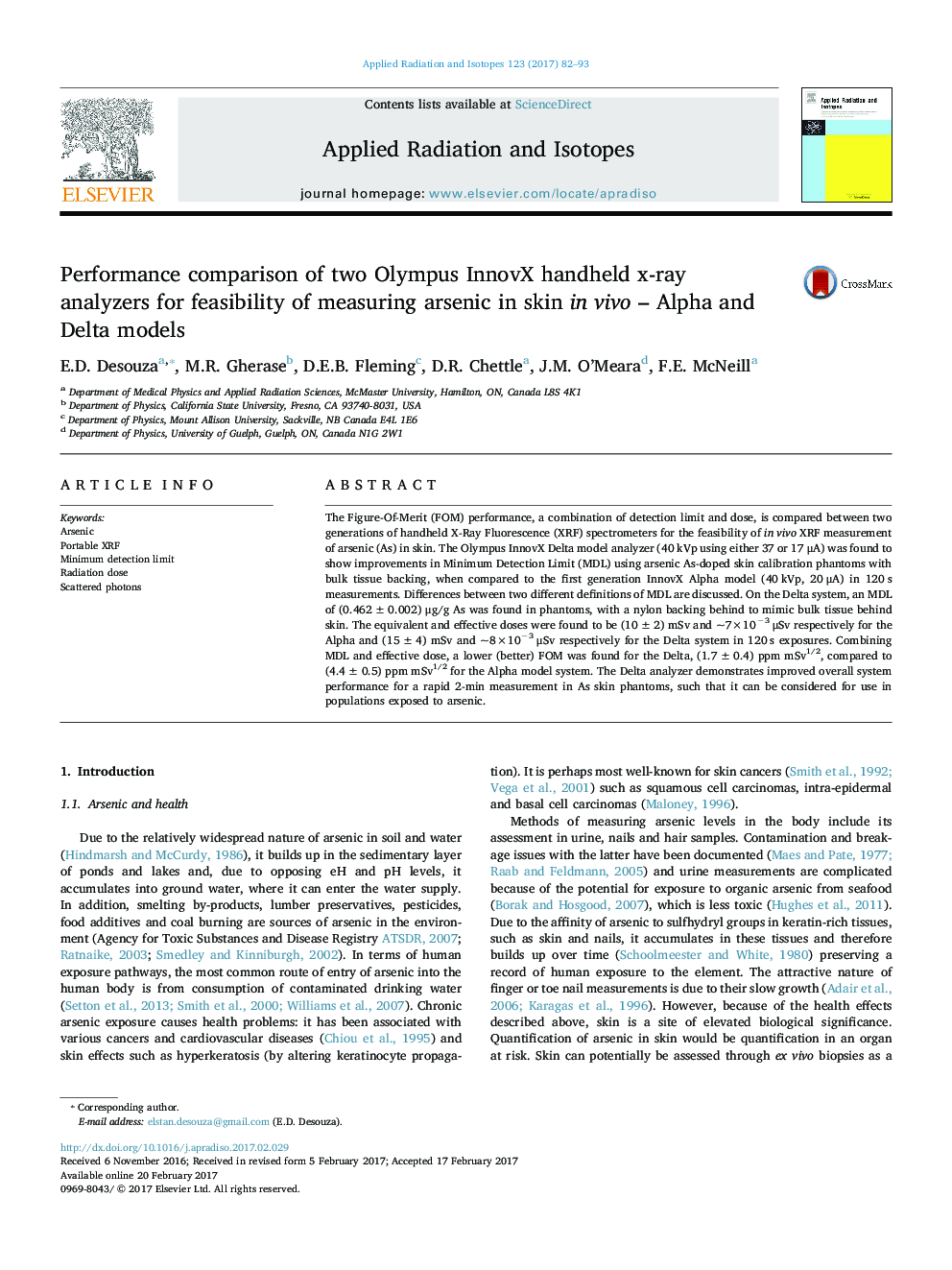| Article ID | Journal | Published Year | Pages | File Type |
|---|---|---|---|---|
| 5497986 | Applied Radiation and Isotopes | 2017 | 12 Pages |
Abstract
The Figure-Of-Merit (FOM) performance, a combination of detection limit and dose, is compared between two generations of handheld X-Ray Fluorescence (XRF) spectrometers for the feasibility of in vivo XRF measurement of arsenic (As) in skin. The Olympus InnovX Delta model analyzer (40 kVp using either 37 or 17 μA) was found to show improvements in Minimum Detection Limit (MDL) using arsenic As-doped skin calibration phantoms with bulk tissue backing, when compared to the first generation InnovX Alpha model (40 kVp, 20 μA) in 120 s measurements. Differences between two different definitions of MDL are discussed. On the Delta system, an MDL of (0.462±0.002) μg/g As was found in phantoms, with a nylon backing behind to mimic bulk tissue behind skin. The equivalent and effective doses were found to be (10±2) mSv and ~7Ã10â3 μSv respectively for the Alpha and (15±4) mSv and ~8Ã10â3 μSv respectively for the Delta system in 120 s exposures. Combining MDL and effective dose, a lower (better) FOM was found for the Delta, (1.7±0.4) ppm mSv1/2, compared to (4.4±0.5) ppm mSv1/2 for the Alpha model system. The Delta analyzer demonstrates improved overall system performance for a rapid 2-min measurement in As skin phantoms, such that it can be considered for use in populations exposed to arsenic.
Related Topics
Physical Sciences and Engineering
Physics and Astronomy
Radiation
Authors
E.D. Desouza, M.R. Gherase, D.E.B. Fleming, D.R. Chettle, J.M. O'Meara, F.E. McNeill,
